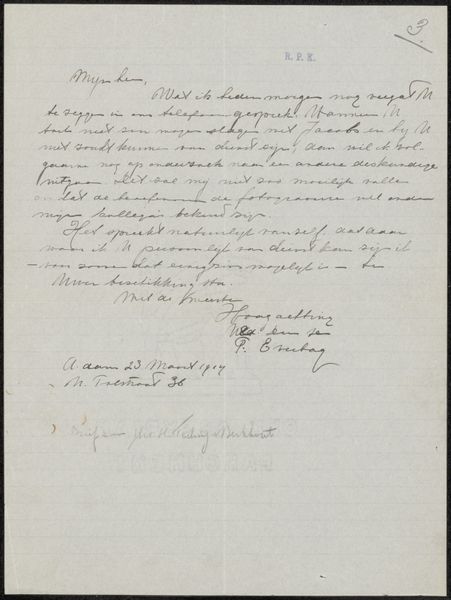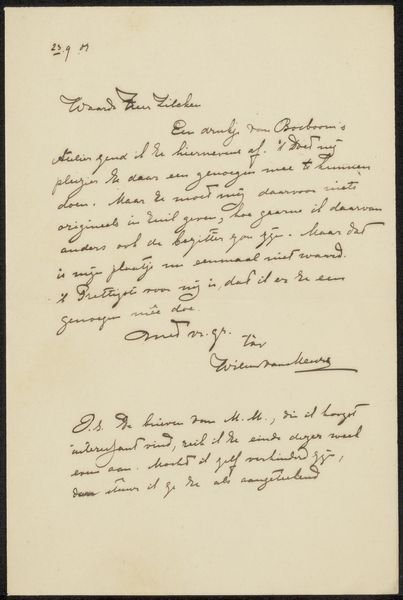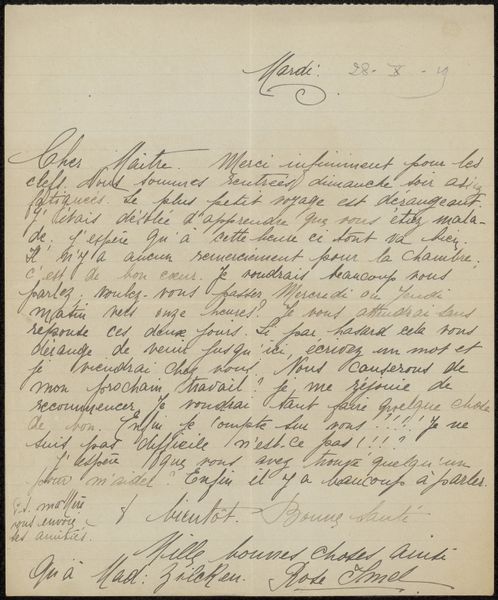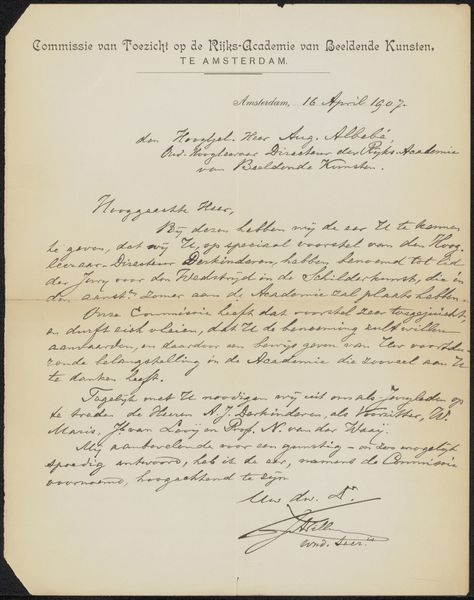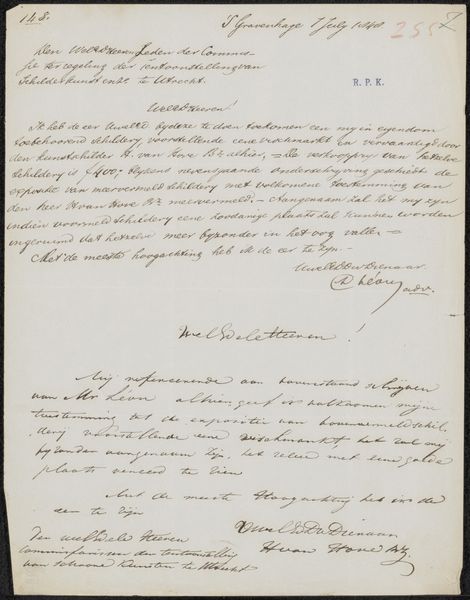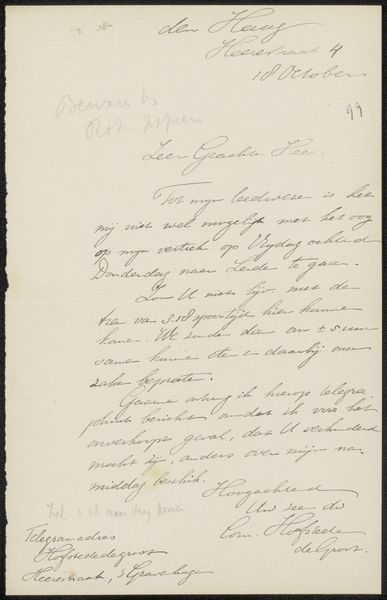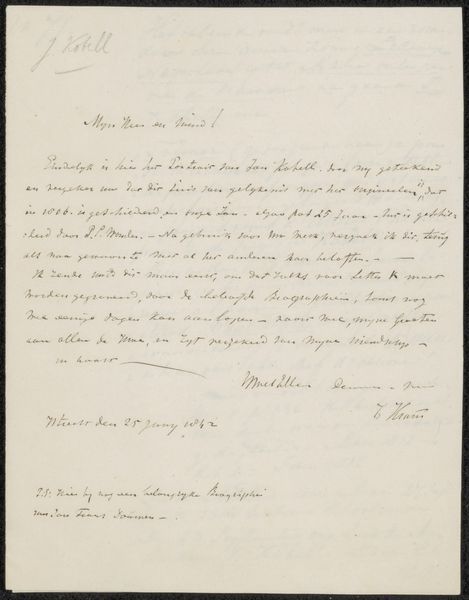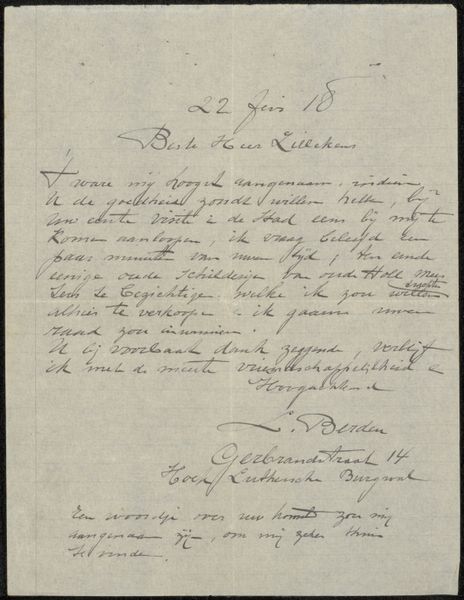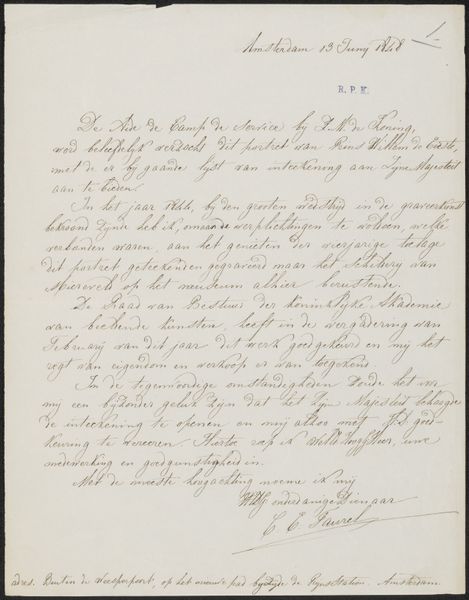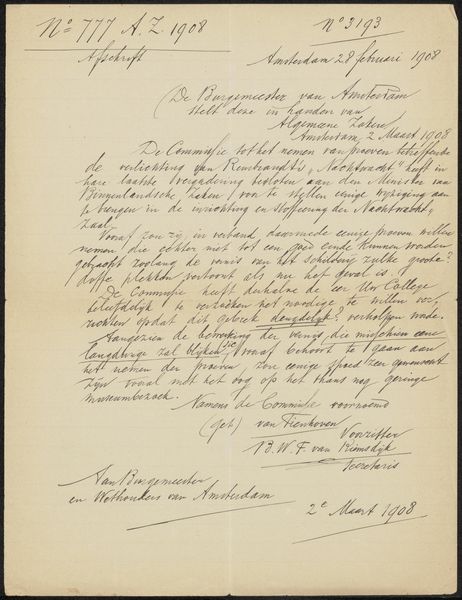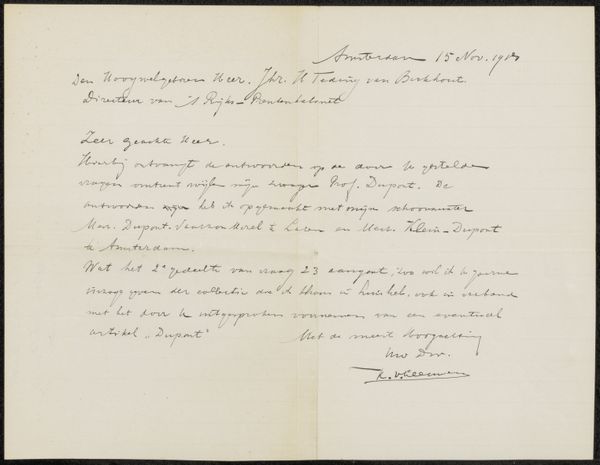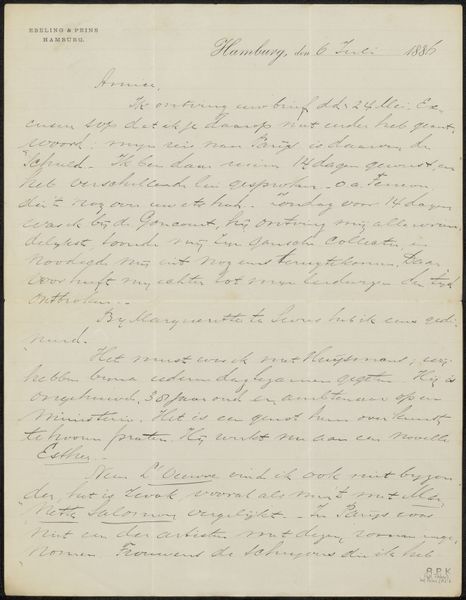
drawing, paper, ink, pen
#
drawing
#
paper
#
ink
#
pen
Copyright: Rijks Museum: Open Domain
Curator: Here we have "Brief aan jonkheer Hendrik Teding van Berkhout," which translates to "Letter to Esquire Hendrik Teding van Berkhout." Penned by Frans Everbag, most likely around 1915, this letter is rendered in ink on paper. What are your initial impressions? Editor: My first thought is how incredibly intimate it feels, almost like eavesdropping. The delicate script dances across the page, a swirling symphony of black ink against the aged paper. It feels immediate, even urgent, like a whispered secret meant for only one person. Curator: I find that observation interesting, because script, historically, possesses power beyond the immediately personal; as we decode it, each word, stroke, and flourish unveils societal values. This letter isn’t simply about its literal meaning; it’s about communication within a very particular time and context. The penmanship, the choice of words, the very act of sending a letter—all resonate with cultural significance. Editor: You’re right, of course. Beyond the personal, I see the formal, almost ceremonious way he writes to someone, in graceful script, "Zeer geachte Heer." That’s “Dear Sir,” right? This kind of formal exchange seems almost unimaginable now in our rushed digital missives. It's a dance of respect. Curator: Precisely! And even the materials – the permanence of ink, the tangible quality of the paper – speaks volumes about the intention behind the message. The selection suggests the writer wants to have what he is expressing taken seriously. This contrasts our current forms of digital communications which, in their ephemeral nature, almost imply disposability. Editor: A fair point, because looking closer now I also feel a faint longing, too, perhaps for a time when handwriting revealed character in a way keyboards never could. And the slight imperfections, the tiny smudges of ink, these speak to an inherent vulnerability…It reminds me, also, that correspondence as an art form has really disappeared, in its tactile and literary value. I hadn't considered that before. Curator: It's something to remember when viewing these kinds of artifacts, yes. Each letter contains a piece of cultural history, of relationships as conducted in this time. A whole narrative exists in its strokes.
Comments
No comments
Be the first to comment and join the conversation on the ultimate creative platform.
